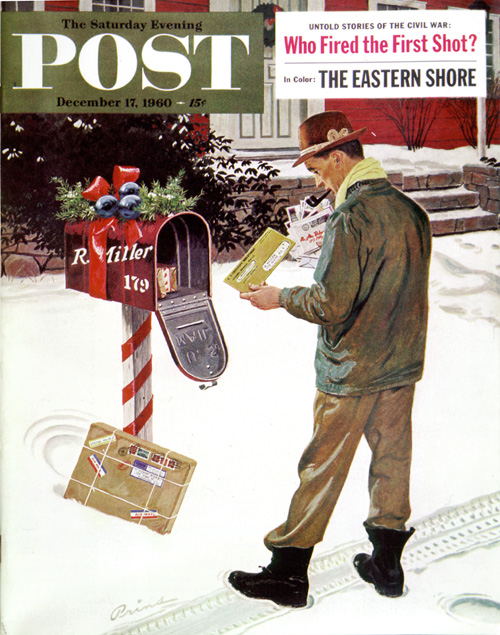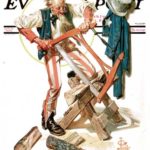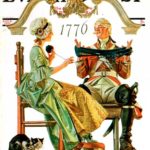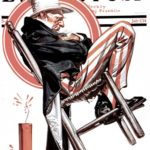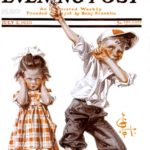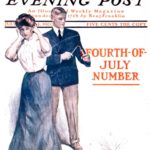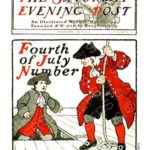Cover Collection: What Keeps Us Up at Night
Whether it’s work, weltschmerz, or worm farming woes, we all experience insomnia about something at some point in our lives. Here are some of our favorite covers of the things that keep us up at night.
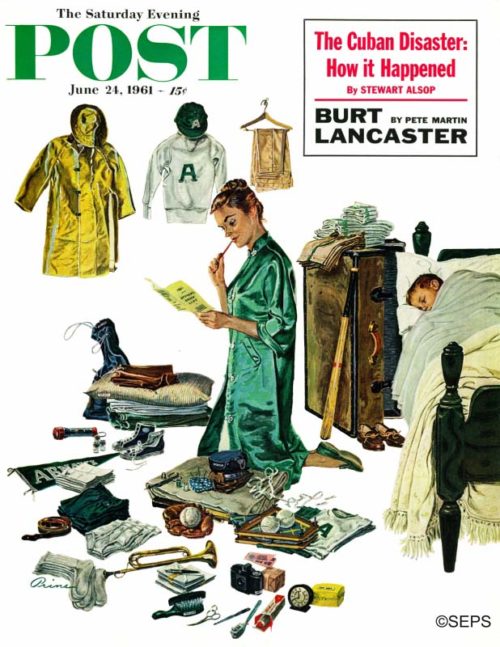
Ben Kimberly Prins
June 24, 1961
While our young camper dreams of fires and “bug juice” (that favorite beverage of camp mess halls), mom is willing to forego a few hours of sleep in exchange for four weeks of boylessness. Tomorrow morning mom will be informed by her son that, while most of the paraphernalia assembled here by artist Ben Prins is okay, a camper has not more use for washcloths and a pincushion than he was for silk pajamas and an arithmetic book. Why, with the space they occupy her could make room for important stuff such as candy bars, a whittling knife, and, for a little fun after lights-out, his rubber snake and a package or two of sneezing powder.
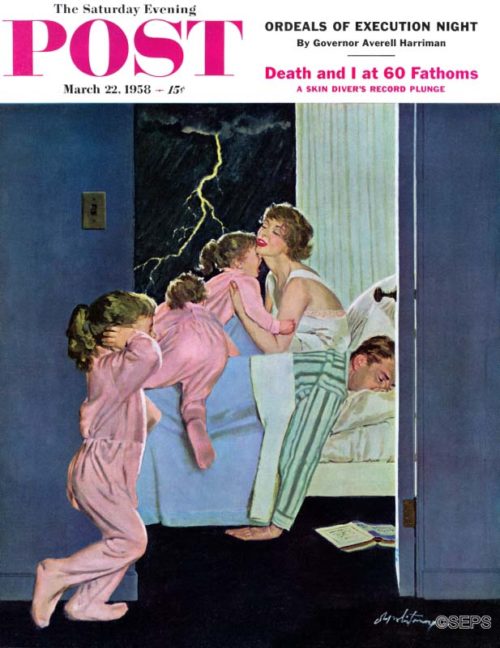
M. Coburn Whitmore
March 22, 1958
Of course, the children haven’t been frightened by Papa’s snoring, but by the awful sounds of Nature on an electrical rampage. So mother will gather them in her arms and love away their fear. Coby Whitmore’s man of the house, buried there in the bed. must be the deepest sleeper this side of the proverbial log. How does she get him up mornings—rap on his head with the book?
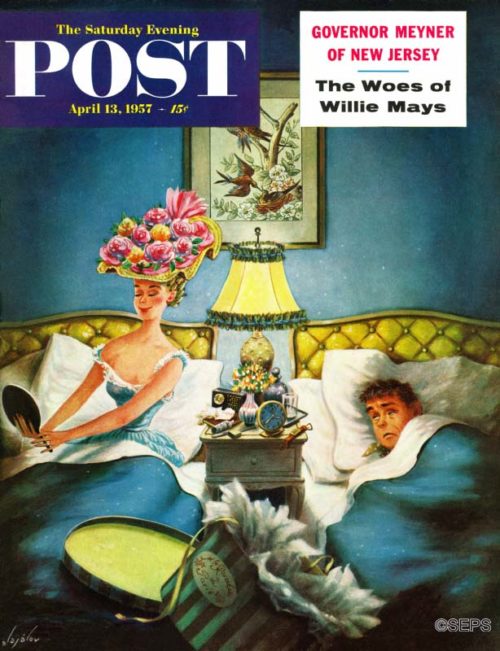
Constantin Alajalov
April 13, 1957
We see by the cover that Mlle. Rosalie de Paris has unloaded on madam a chapeau avec beaucoup de flower garden topside. It is darling, madam is fully convinced. And if you think it is a malformed nightmare whose logical repository is the ash-can, you must be just a puritanical old fogy, for it is also regarded as a masterpiece by that great American designer, Monsieur Alajalov de New York. As for the character in the other bed, for once in his life he is noticing that his wife has a new hat.
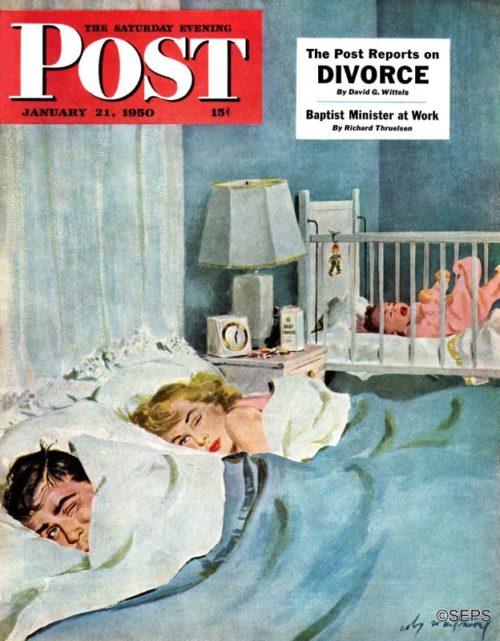
M. Coburn Whitmore
January 21, 1950
Who’s going to get up and give the baby her bottle and a new deal in underwear? Mom and dad dearly love their little alarm clock, but they do wish that babies came equipped with a lever by which they could be set, the night before, to ring at 7:30 a.m. instead of at one of the more unholy hours. Mom and dad will battle it out for a few more howling minutes to see which one will totter out of bed and do the honors.
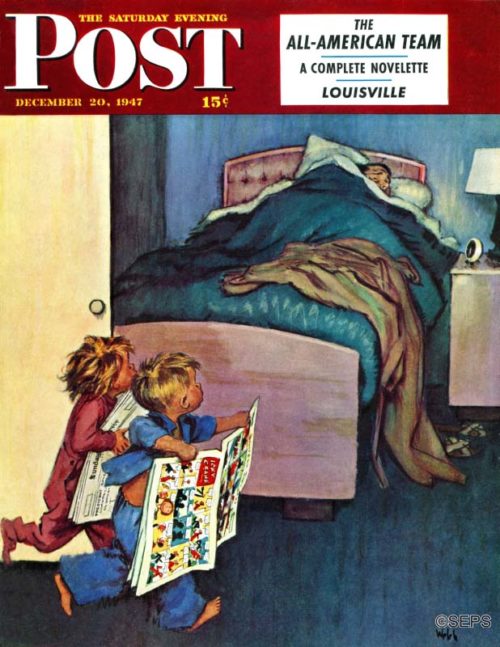
Jack Welch
December 20, 1947
Some years ago, Frank Kilker, an associate art editor, heard artists complaining about a fellow named Jack Welch, of Valhalla, New York, who worked for an advertising agency. Welch did sketches of proposed illustrations, for the guidance of the artists who would do the finished job. But the rough sketches were so good that it was tough for the artists to better them. Kilker looked Welch up, and Welch started doing illustrations for the Post, including this one—his first cover. In painting his picture of a father’s Sunday reveille, Welch was drawing on experience with his two daughters.
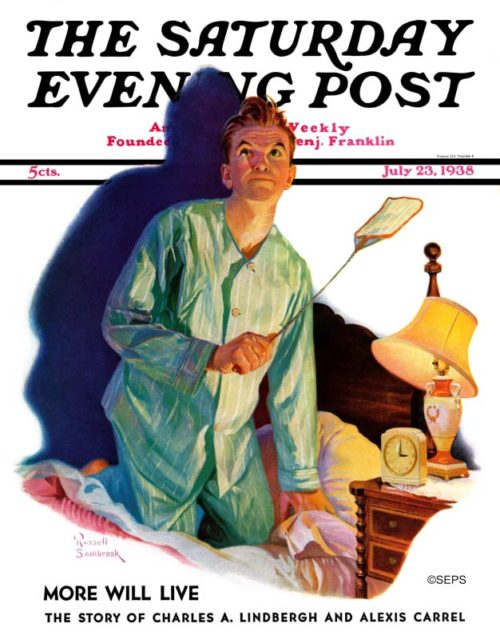
Russell Sambrook
July 23, 1938
We’ve all been there at 3 a.m. when a fly dive bombs your head or that invisible mosquito whines in your ear. Much has changed since 1938, but two things haven’t: that fly swatter and the fact that this guy isn’t going back to bed anytime soon.
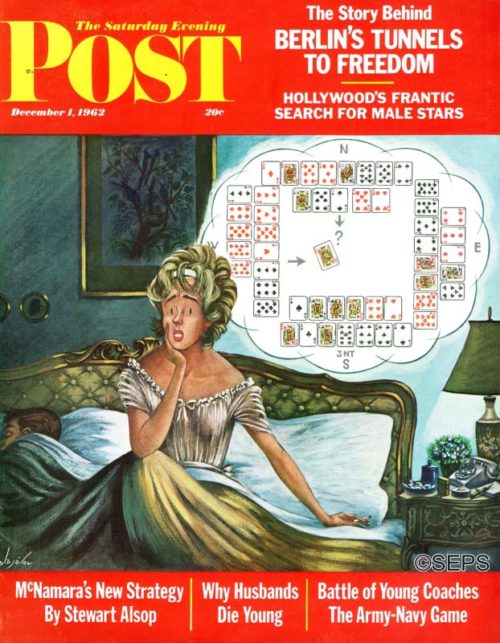
Madam is remorseful about her own greed,” commented famed contract-bridge authority Charles H. Goren about the dilemma of the sleepless bridge player depicted by artist Constantin Alajalov. “It has dawned on her that withholding her ace of diamonds on the first trick, because she would have had to waste her singleton king, may have been penny-wise and pound-foolish,” said Goren. “If she had been satisfied with two diamond tricks instead of three, she could easily have made her game at three no-trump, by playing the ace from the dummy. She would then have been in position to take the important club finesse. But when she all too frugally won with the king in her own hand, she had no way to reach dummy without letting East in, and that character rudely led back the queen of hearts, so that Madam lost five tricks.”
Classic Covers: The “Post”-Holiday
As we all know The Saturday Evening Post is famous for memorable holiday covers. But what about the “post”-holiday covers? After the many exciting days of anticipation and preparation, all we can say is, “Thank goodness that’s over!”
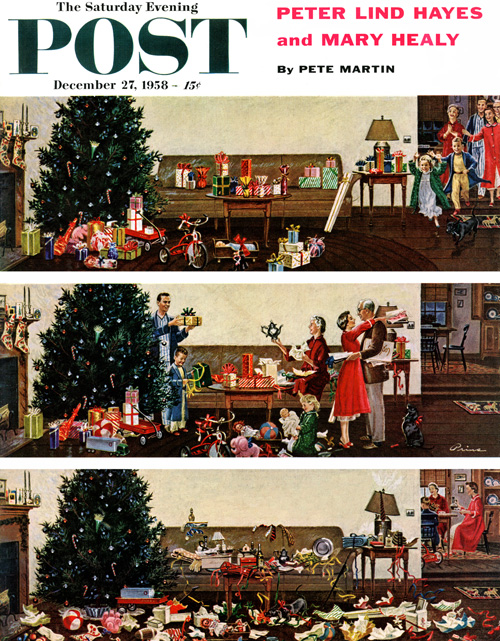
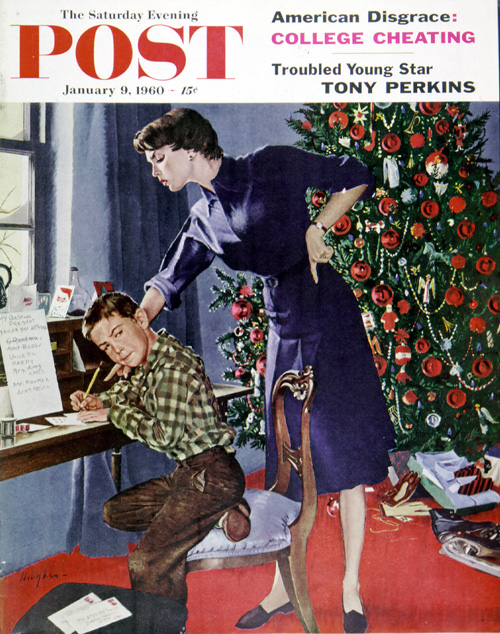

Classic Covers: The Fourth of July Throughout the Decades
Artist Guernsey Moore did many turn-of-century covers (at the turn of the 20th century, not the 21st), and the June 30, 1900, issue appears to be our first Fourth of July cover. Using colonials as representative of the Fourth was popular before the days of fancy fireworks and Fourth of July parades, although firecrackers showed up early. The July 4, 1903, cover shows a man setting off firecrackers and milady, in long skirt, is less than thrilled with the noise (covering her ears was a hint). Hmmm, this theme seems familiar: fast forward to the roaring 20s and J.C. Leyendecker’s cover depicting a young boy setting off a cap gun to make patriotic noises and a little girl covering her ears. Apparently, females do not care for loud noises.
The July 1, 1939, cover by artist Arthur H. Fisher features a dramatic eagle against the stars and bars, complete with a don’t-mess-with-me glare. Shades of impending war? The next decade saw a delightful 1945 John Falter cover depicting a Fourth of July parade in Perkasie, Pennsylvania, complete with patriotic bunting, brass bands, and a crowd having fun. Alas, it wasn’t the real thing that year, as the townspeople didn’t have time for parades. “They’re busy writing letters to the girls and boys in service,” said the editors, who speculated that many a hometown soldier would enjoy the vicarious thrill of receiving the cover in their mail.
Another delightful celebration is shown on the July 4, 1953, cover by artist Ben Prins. The night sky is exploding with festive color and light, and the onlookers are mesmerized at the sight. Well, maybe with the exception of the young boy and girl chasing each other with sparklers (not advisable, by the way).
It would appear that of all our many artists, J.C. Leyendecker (we won’t say he was the most patriotic) stands above the crowd for the sheer number of Fourth of July covers. We’re counting 15, and like all of Leyendecker’s covers, they are a delight, as you can see below.
The Post, as you may know, is revamping and moving into new directions, as shown by our July/August 2009 cover by Eric Bowman, depicting “America the Beautiful” from the perspective of a new generation of talented illustrators. We welcome them with open arms!
But you didn’t really think we would leave our beloved Norman Rockwell out of our celebration, did you? His July 6, 1946, cover shows workmen cleaning the torch on the Statue of Liberty. The editors tell us this happened every year around this time, after which “the mighty lady of Bedloe’s Island (now called Liberty Island) sheds a brighter light, to the general satisfaction of free spirits everywhere.”
Gallery
Click Here to View as Slideshow.
